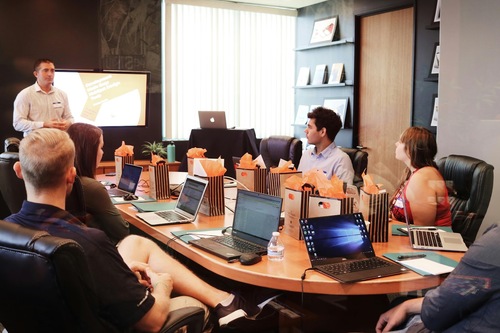Employees’ emotional dedication and commitment to their work and company is called employee engagement. It includes more than just job happiness; it also includes how motivated, engaged, and committed staff members are to the organization’s objectives and core values.
Engaged workers are passionate about what they do, have a strong sense of fulfillment and purpose, and are prepared to go above and beyond to support their company’s growth. They are likelier to be devoted to producing excellent, creative, and productive results. Financial incentives are not the only things that affect employee engagement; other elements include a sense of purpose, a positive work atmosphere, open communication, chances for professional advancement, and a sense of community.
Understand the Engagement Level
The main goal of an employee engagement survey is to determine how engaged the workforce is. You will be able to identify the primary workforce drivers with the aid of the gathered data from an employee engagement study. You will also comprehend the reasons behind certain employees’ disengagement or subpar performance throughout a specific time frame. The components of “engagement” that differ throughout organizations include workplace;
- Tasks & responsibilities
- Growth & development
- Acknowledgment & appreciation
- Compensation & benefits
A flawless combination of these components guarantees the employees’ complete motivation, engagement, and involvement.
Give Employees A Voice
Engagement surveys are essential because they provide a forum for candid feedback from staff members. Because it gives your employees direct communication with the management team, the Voice of the Employee (VoE) is essential to the development process. Employees who participate fully in the planning process come to understand that their opinions matter and that they have some stake in the firm.
Define the factors most affecting engagement
An employee’s level of engagement is primarily influenced by certain areas and items, which are identified through a key driver analysis included in most engagement survey studies. Organizational action plans centered around these important drivers guarantee that companies are devoting time and resources to the areas that have the biggest effects on employee experience and a greater influence on retention-related variables.
Unveil Genuine Connections
Employee engagement surveys delve deeply into the genuine bonds that workers have with their roles & the company. It’s about establishing a space where each person is valued as a vital component of a greater story rather than merely a title. Think of it as giving employees backstage passes to the happy-workplace concert.
Benchmark the Insights for Comparison
Comparing the results for process benchmarking is among the main goals of employee engagement surveys. After completing the data analysis, you may compare the results to the prior performance to determine what has changed and what still needs to be done. Additionally, you may assess how your company is doing compared to other companies operating in the same industry by comparing the data with industry criteria. This procedure will also assist you in determining whether the workforce is dealing with problems unique to your company or if other businesses share them.
To sum up, completing an employee engagement study is more than simply a chore—it’s a calculated investment in the beating heart of your company. The wand reveals the hidden gems inside employee sentiments, creating an environment where achievement, passion, and connection entwine in an everlasting dance of enchantment.




